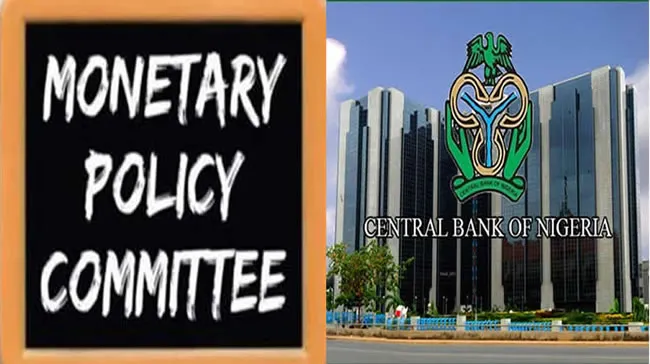2
LAGOS – As Nigeria’s Monetary Policy Committee (MPC) begins its final meeting of the year today, a complex economic landscape is forcing policymakers into one of their most delicate balancing acts yet.
After months of aggressive tightening aimed at taming inflation and stabilising the naira, the committee began easing monetary policy at its last meeting, a shift that many interpreted as a sign of growing confidence in the country’s economic recovery.
But new inflation data has complicated that narrative. While annual inflation is easing steadily, the re-emergence of month-on-month price pressures which are driven largely by volatile energy costs, is prompting fresh debate about how far and how fast the MPC should go in relaxing monetary conditions.
With the economy still vulnerable to external shocks, analysts say the meeting will serve as a critical test of the MPC’s ability to support growth without undermining the fragile gains achieved over the last several quarters.
Significantly, Nigeria’s annual inflation rate has been on a downward trajectory for most of the year, reflecting a gradual unwinding of price pressures that intensified after the removal of fuel subsidies and unification of foreign exchange windows last year.
Food prices have moderated due to harvest supply, and the naira has shown signs of stabilising compared to the volatility experienced in the first quarter.
These improvements encouraged the MPC to initiate a cautious easing cycle, trimming the benchmark interest rate after prolonged monetary tightening.
Policymakers hinted that the worst of the inflation spiral might be behind the economy, creating room to shift focus toward supporting real-sector growth.
However, beneath the favourable year-on-year figures lies a more worrying trend: month-on-month inflation is rising again.
Driven in large part by an unexpected surge in energy prices, particularly cooking gas, October’s data show renewed price volatility that could quickly spill over into other sectors.
“Month-on-month inflation is the signal to watch right now,” said a senior economist at an investment firm. “It tells you what consumers are feeling today, not what happened last year. And right now, that picture is getting blurry again.”
October’s spike in energy costs has become a central concern for the MPC. A sudden increase in the price of Liquefied Petroleum Gas (LPG), following supply disruptions linked to labour actions in the oil sector, pushed the energy index upward after months of relative stability.
The sharp jump, analysts warn, could reignite broader inflation if not contained quickly. Energy costs affect everything from transportation to household consumption to food distribution. Even a temporary shock can have ripple effects that policymakers must weigh carefully.
“These energy-induced pressures remind us that inflation in Nigeria is still vulnerable to supply-side disruptions,” noted Ajibola Titus, a macroeconomic researcher.
He added, “It’s not just a demand issue; it’s structural. That limits how aggressively monetary policy can be eased.”
The concern is that cutting interest rates too quickly, in an environment where energy prices are unstable, could undermine the progress made in restoring price stability — a key objective of the current central bank leadership.
Beyond inflation metrics, the naira’s prospects loom large in the MPC’s decision-making. Nigeria’s interest-rate differential, which is the gap between domestic interest rates and those of major global markets, plays a significant role in attracting foreign portfolio inflows.
These inflows have helped stabilise the foreign exchange market and boost external reserves in recent months.
If the MPC cuts rates too aggressively, it risks weakening this differential at a time when many emerging markets, including South Africa, Egypt, and Brazil, are maintaining tight monetary positions to protect their currencies.
Such a move, according to Cyril Amkpa, “Could trigger capital flight, increase pressure on the naira, and fuel imported inflation. With Nigeria still heavily dependent on imports from refined fuels to raw materials, currency stability is critical to keeping inflation in check”.
“Investors need yield,” one currency strategist said. “If Nigeria cuts too deeply while others stay put, the naira could come under pressure again. That would undo much of the progress the CBN has made since the start of the year.”
While caution remains the dominant message from analysts, the need to support domestic growth is equally compelling.
Nigeria’s GDP growth remains sluggish, hampered by weak consumer spending, high borrowing costs, and persistent structural challenges. Businesses continue to cite expensive credit as a barrier to expansion, while households struggle to cope with rising living costs.
The MPC, Amkpa added, “Must therefore navigate a narrow corridor: ease enough to stimulate lending and investment, but not so much that it stokes inflation or destabilises the exchange rate”.
He added, “It’s a very delicate moment. Growth needs support, but you can’t sacrifice the gains on inflation or FX. The MPC’s credibility depends on getting this balance right.”
Despite the mixed signals, consensus is emerging around a modest rate cut. Most analysts predict a 25 to 50 basis point reduction which interpret as a cautious step that signals continued support for the economy while minimising risks to price stability.
Such a move, according to analysts, would allow the MPC to maintain its cautiously accommodative stance, while preserving Nigeria’s attractiveness to foreign investors seeking high-yield markets. It would also give the committee room to respond should inflation pressures intensify in the coming months.
The MPC is expected to weigh several critical variables in its deliberations: Global oil prices, which influence government revenue, FX liquidity, and domestic fuel costs.
Energy supply conditions, especially following the recent disruptions, foreign exchange market behaviour, including the stability of the naira and reserve inflows.
Domestic growth indicators, such as lending activity, consumer demand, and industrial output.
Daily Independent gathered that, if these factors move in the right direction, there could be room for deeper cuts in early 2026. But for now, analysts say caution will define the MPC’s approach.







